Without a doubt, cobblestone houses, commercial buildings, churches, stores, railroad pumphouses, cemetery markers, and other structures remain remarkable historical pieces of architecture. These buildings are not just folk art but an architectural mastery that requires skills.
How were they constructed? What is the history behind them, and why did they rise in popularity in the 18th century in the US? We know you have many questions. But worry not.
We have insight into the cobblestone houses, buildings, or structures, including their history. You will also learn about their construction, i.e., cobblestone architecture, and get a few of these buildings in the US. At the end of it all, you will appreciate these houses.
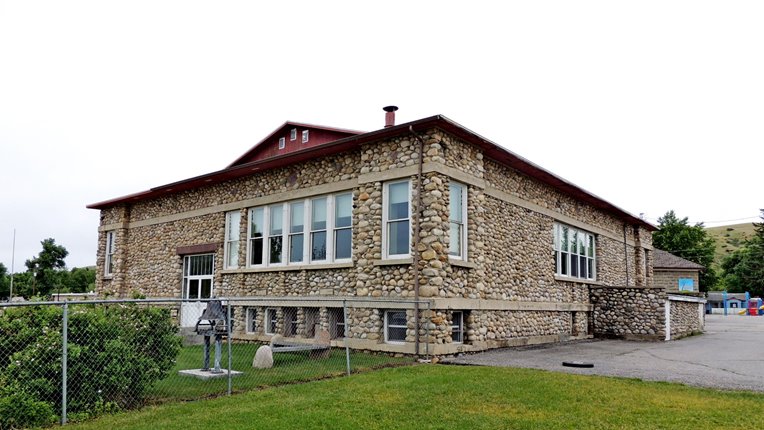
Contents
- Overview
- Early times
- Middle Ages
- 18th century
- Cobblestone houses in North America
- 1. How were cobblestone houses made?
- 2. How thick were the walls?
- 3. When were cobblestones made?
- Canada
- Examples of cobblestone houses
- 1. Colorado National Guard Armory
- 2. Sandstone and Cobblestone Schools
- 3. Cobblestone Railroad Pumphouse
- 4. Cobblestone Manor
- 5. Adsit Cobblestone Farmhouse
- 6. Gifford–Davidson House or Stone Cottage
- 7. Cobblestone Inn
Overview
Cobblestones refer to naturally occurring smooth and rounded stones that measure 2.5–10.1 inches on the Udden–Wentworth scale. They originated from streams or riverbeds, beaches, or places with retreated glaciers. But in some instances, it may mean Belgian blocks or setts. We will not be talking about these blocks.
The Romans used these rocks as early as the 3rd and 4th centuries to make roads or streets. These rocks helped prevent ruts formation on roads or being muddy. Also, they didn’t become dusty. But they were noisy and not so comfortable.
Besides making roads, masons used cobblestones to build (or decorate) houses, public buildings, stagecoach taverns, factories, stores, shops, churches, and barns.
Also, they used them to construct buildings or make foundations for wooden buildings or structures, hops dryers, walls (including dry-stone wall fences), railroad pumphouses, and cemetery markers. A good example was the 1845 Paris Plains Church in Ontario.
Lastly, using cobblestone in mortar to build houses, commercial buildings, or other structures is known as cobblestone architecture or masonry. Let us look at history.
Early times
Egyptians are perhaps the first to use cobblestones to build houses. Evidence of Hierakonpolis ruins suggests so. These people set mud-brick houses on cobble foundations. Also, they used them to make palaces or administrative centers, as evidenced by large heaps of cobbles left behind after these structures or houses collapsed.
Last but not least, the Romans used cobbles to build coastal fortifications in the 3rd to 4th centuries besides using them to make roads.
Middle Ages
During the Middle Ages, the Englishmen and a few Northern Europeans used cobbles, specifically flints to build houses. They used different colored split stones or carefully selected and graded unsplit cobbles to decorate the outside wall. But inside, the wall had unsplit cobbles.
Also, as part of folk art, they used cobbles with matched colors, sizes, and shapes to decorate outside houses. However, most walls had a mixture of rubble, reused bricks, and cobbles.
18th century
By the 1750s, there were houses made from cobblestones along Sussex’s coastal area in England, especially around Shoreham, Brighton, and Worthing. These houses had beach cobbles bonded by horizontal mortar joints that formed a V-shape.
Cobblestone houses in North America
You cannot talk about cobble houses or buildings without mentioning North America, especially New York and a few other places. Unlike in Europe, the refined decorative mortar treatment of cobblestone houses in North America is fascinating. Let us dig more.
1. How were cobblestone houses made?
Masons constructed cobblestone houses in three primary ways.
- In the early days, builders interlaced layers of cobbles with much simpler rubble (broken, irregularly sized, textured, and sized stone) walls and bonded them with mortar. Such houses ended up with regular courses on the outside. But the inside walls were random.
- In the 1940s, houses had a “rubble core with a facing of smaller lake-washed cobbles, which included longer bonding stones reaching into the core. The facing stones showed perfectly matched faces, yet the stones were of irregular dimensions,” notes Cobblestone Museum
- The final and latest method involved laying rubble first and then a cobblestone veneer. This method didn’t have bonding stones going into these veneers. Also, it utilized smaller cobbles.
2. How thick were the walls?
In most of these buildings, the walls were 18-24 inches thick and thinned as you moved upward. Interiors were plastered or had a lath installed.
3. When were cobblestones made?
Cobblestone houses construction in the US was predominantly after the completion of the Erie Canal to the end of the civil war, i.e., roughly 1825-1865. About 1000-1200 houses were made in North America, with the style most prominent in 1835-1860.
English masons working on the canal from 1817 to 1825 are the ones who brought this construction technique, i.e., they started building these houses after completing the canal.
Also, the availability of cobbles obtained when clearing fields and the economic fortune and prosperity of the Erie Canal were driving forces for these houses.
For instance, in New York State, around the Finger Lakes Region, the glacier recession left a lot of small, rounded cobbles, encouraging their use in this area. Also, some of these stones came from the shores of Lake Ontario.
The construction of these houses began in New York and then spread to the west towards Ohio, Illinois, Wisconsin, and Michigan by migrants before going to Ontario. But in Wisconsin, only the exterior houses had cobblestones as a decorative layer over a rubble core.
Today, about 750 cobblestone houses remain, most of them valued historical sites. Also, most of them are privately owned homes, with the most significant number, about 90% “within a 75-mile radius of Rochester” (1) in the New York State. And if you want a public building in the US, go to Alexander Classical School in Alexander, New York.
Last but not least, the construction of cobblestone houses diminished in 1865 due to their high costs, making them undesirable during this industrial age. But there are cobble houses built in the early 20th century. If you want to know one, a good example is a Classical Revival-styled Town Hall in Westport, Connecticut. Its exterior surface has cobbles.
Canada
In Paris, Ontario, the considerable number of cobblestone houses earned it the name the cobblestone capital of Canada. When he arrived in this place in 1838, Levi Boughton, a mason from New York, Introduced cobblestone houses using water-washed cobbles. Today, Paris, Ontario, has only a cluster of these buildings.
Examples of cobblestone houses
As mentioned earlier, today, there are about 750 known cobblestone houses in the US and about 14 in Canada. Most of the houses or buildings in the US are around New York, with a few in Illinois, Michigan, New Mexico, Ohio, Wisconsin, Vermont, and Colorado.
Let us look at only a few cobblestone houses in the US for illustration purposes.
1. Colorado National Guard Armory
Once the largest cobblestone building in the USA, this landmark four-story building is in Golden, Colorado. It was built in 1913 as an armory, mess hall, auditorial, and quarters for Guard’s Company A of Engineers.
While its designer James H. Gow intended its construction to use bricks, the need to cut cost and availability of cobbles resulted in the use of cobblestones.
Over the years, it has served in a part or whole as a student housing, hotel, industrial bank, offices, and a headquarters of the Civil Works Administration. Also, in 1918, Red Cross used it as an emergency hospital during the influenza outbreak. Currently, its owned by Calvary Episcopal Church.

2. Sandstone and Cobblestone Schools
Located at Absarokee, Montana, on Main St. and at 142 S. Woodard Ave, this two-building school complex is another landmark you shouldn’t miss visiting. It was built between 1910 and 1921. But of interest is the one-story Cobblestone School that serves as a high school built by W.R. Plew in 1921. It looks magnificent. Doesn't it?
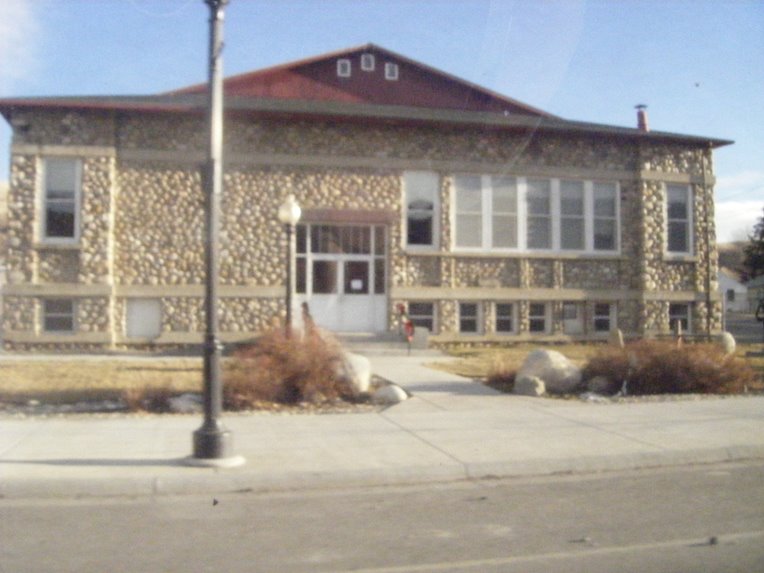
3. Cobblestone Railroad Pumphouse
The Auburn and Rochester Railroad Company constructed this small cobblestone pumphouse structure in 1845 with relatively large, rough, and differently colored cobbles.
Its located in the hamlet of Fishers, which is in the town of Victor in Ontario County, New York.
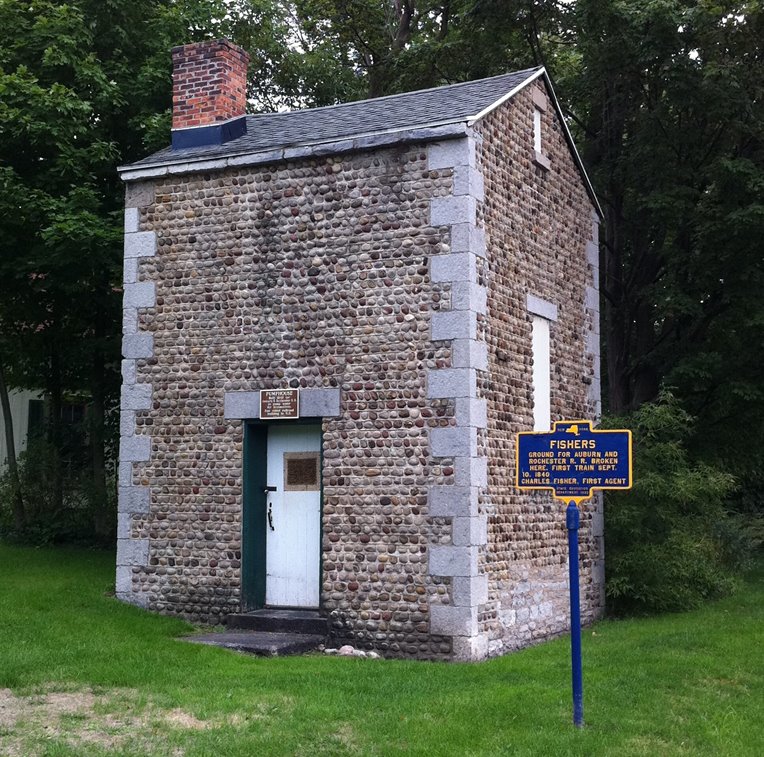
4. Cobblestone Manor
Cobblestone Manor is a two-story constructed in Greek Revival style in the 1830s. But later, in the early 20th century, a Colonial Revival-style front porch decorated with modillions was added.
If you want to see it, this Manor is in Canandaigua in Ontario County, New York.
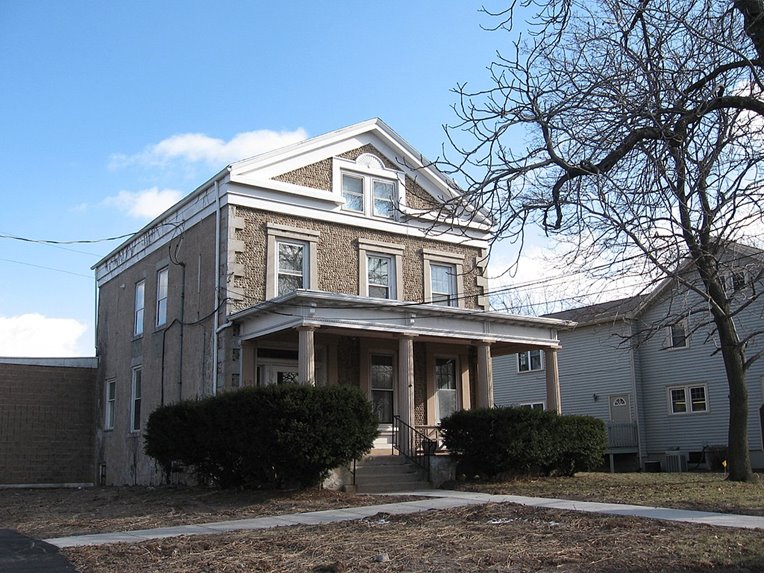
5. Adsit Cobblestone Farmhouse
This 1832 historic cobblestone home in Mendon in Monroe County, New York, features a federal style. Its construction utilized sized cobbles obtained from the field.
But in the 1850s, it was an inn, and farmers delivering grains from Canandaigua to Rochester used it as a stopover.
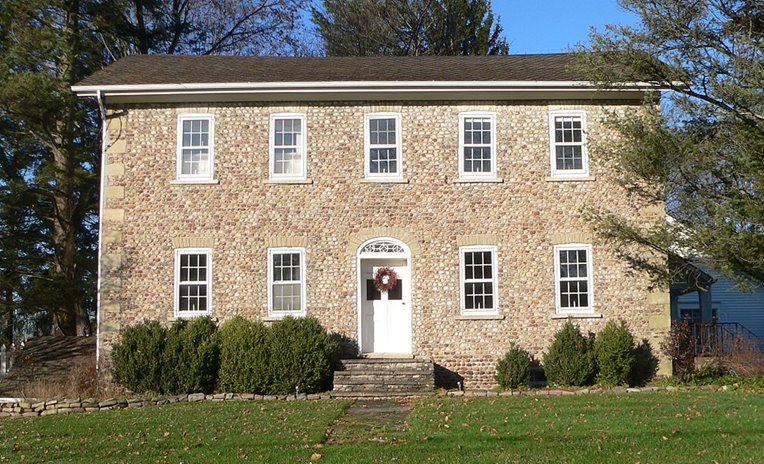
6. Gifford–Davidson House or Stone Cottage
Gifford–Davidson House is located in Elgin, Illinois. The first story was built with cobblestones 1950s, but later, in 1871, a frame mansard roof was added, making it a two-story. This charming house features Second Empire style, and in 1903, the owner remodeled it for renting purposes.
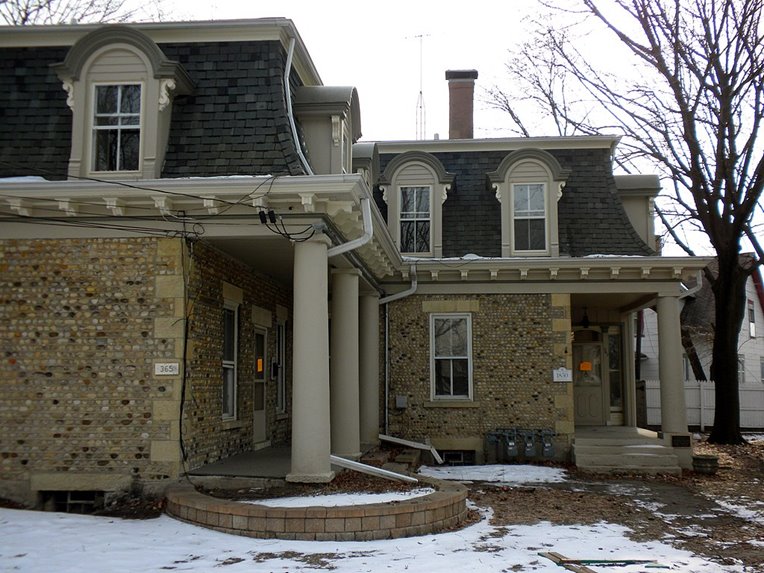
7. Cobblestone Inn
Cobblestone inn is a two-story building situated in an unincorporated hamlet in the Town of Ridgeway, i.e., along Ridge Road (state highway NY 104) in Oak-Orchard-on-the-Ridge. It has a cobble facing with five rows for every Medina sandstone quoin.
At its construction time, i.e., in the 1930s, it served as a stagecoach stop. However, it was not just for travelers to dine, drink and rest, but also served as a post office and a meeting place.
Over the years, it has served as a restaurant, guest house, an antique shop. But in 2010, it became a residence place, making it the largest cobblestone residence in North America.
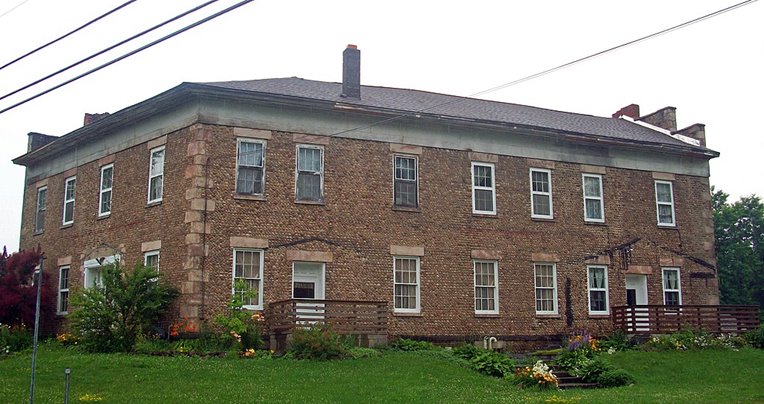

Leave a Reply